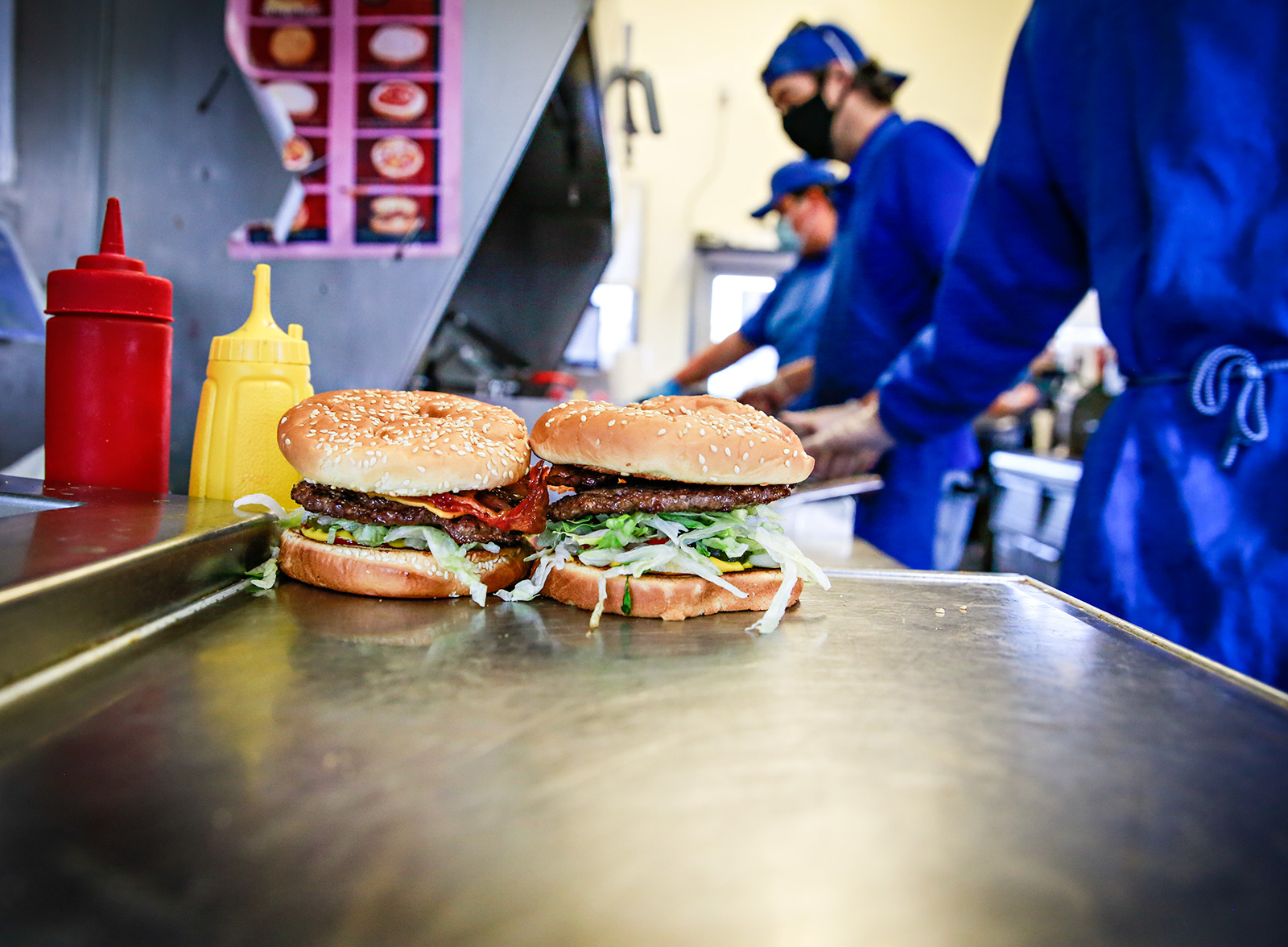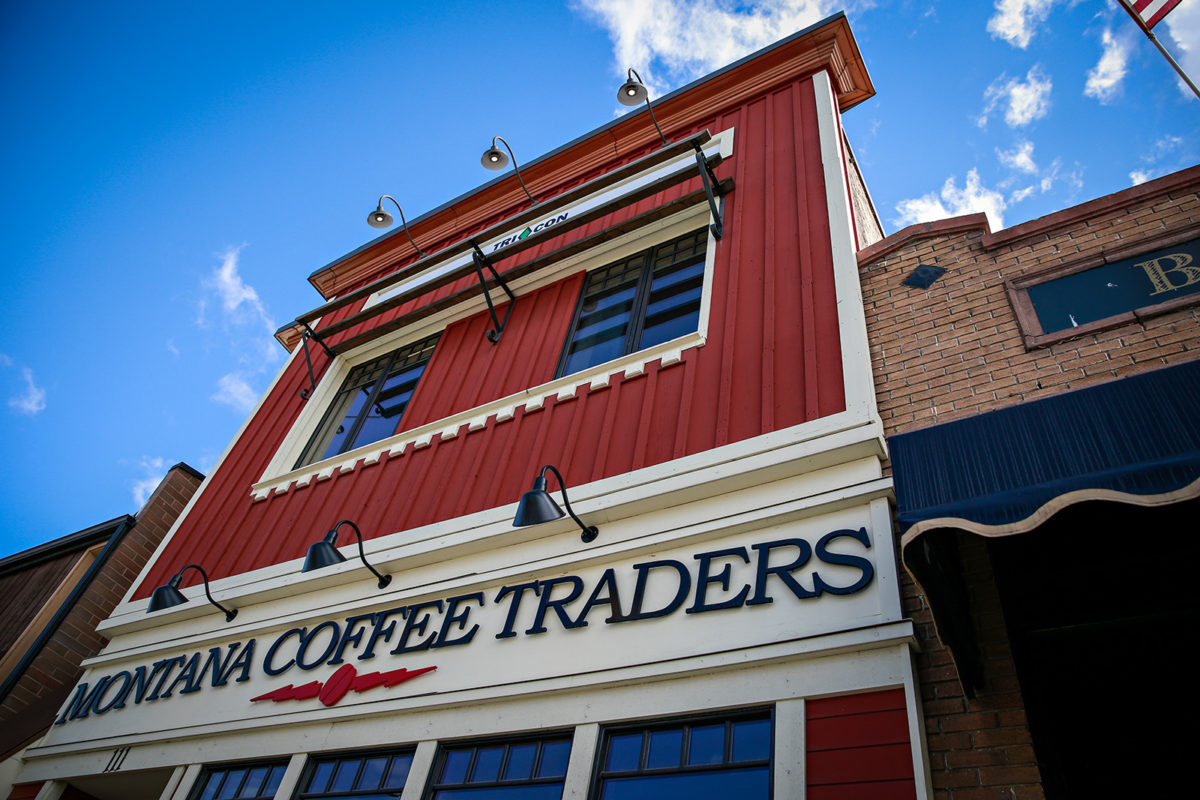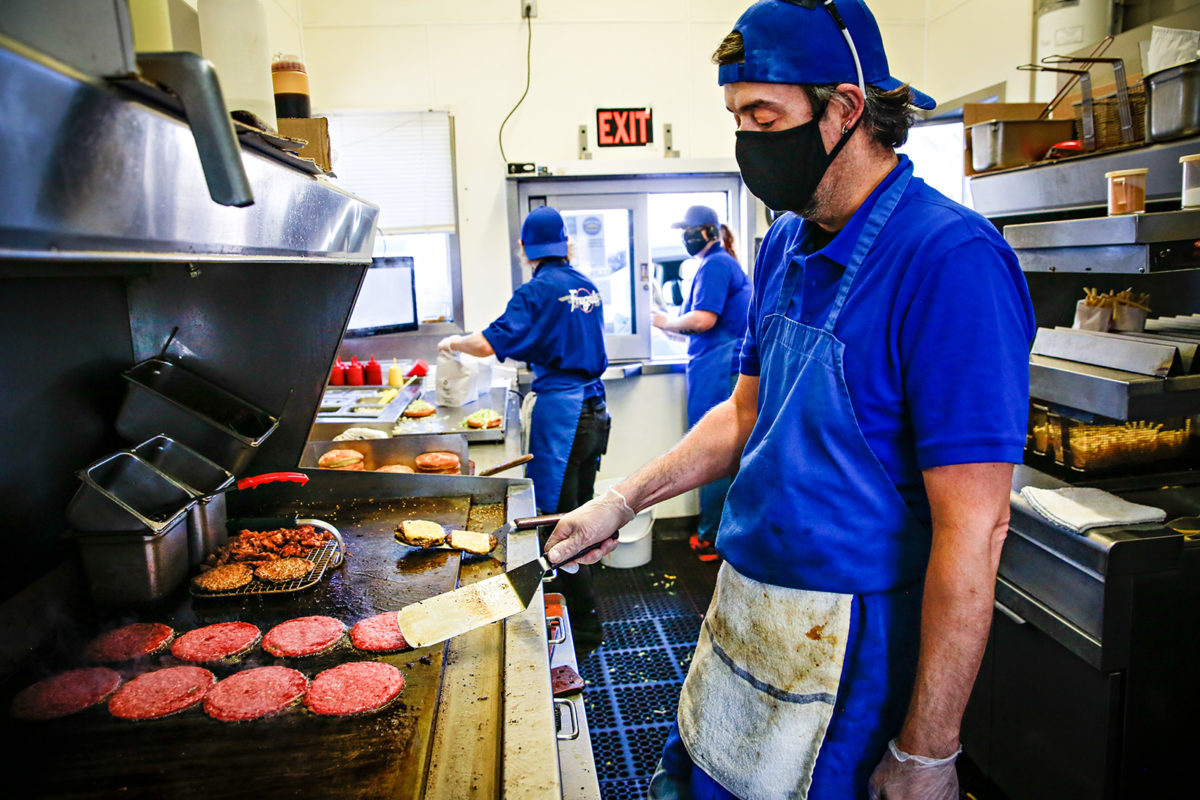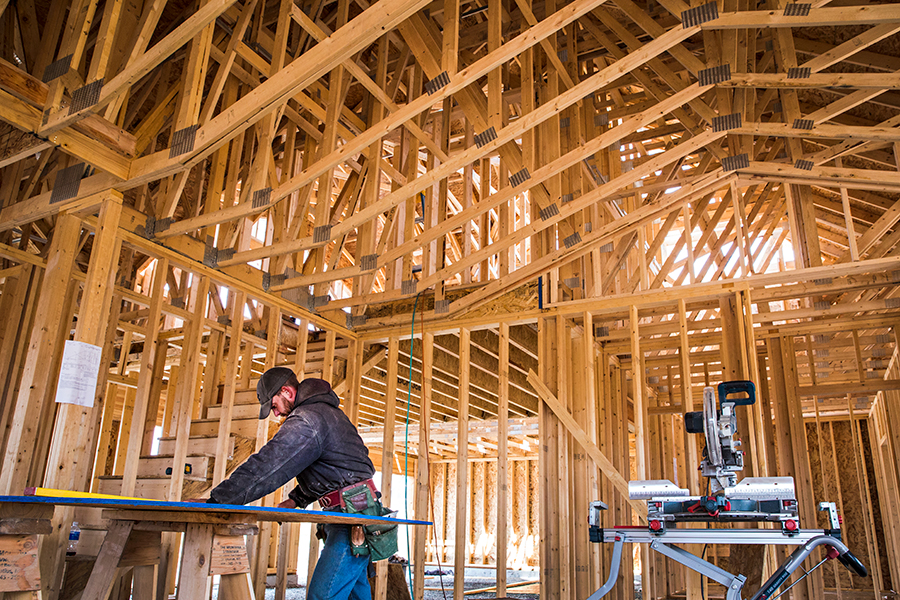Now Hiring
As the economy recovers from the pandemic, employers continue to struggle filling job vacancies in nearly every sector, with the shortage most pronounced in the service industry
By Maggie Dresser
When Montana entered a lockdown more than a year ago and bars, restaurants and nonessential establishments shut their doors, Montana Coffee Traders laid off nearly half of its 112 employees from all four locations.
As the economy gradually reopened in the following months, managers at the local coffee shop offered every former employee their job back, which most accepted and returned to work.
But as the pandemic dragged on over the next year, employees started trickling out the door. Some went to school, some left town and others changed career paths. Managers have struggled to fill those vacancies ever since.
Now that Montana is reopening and the Flathead Valley is expecting one of its busiest summers on record, Coffee Traders’ staff is down 9% from before the pandemic. That led to the recent decision to temporarily close the Kalispell location during the same year the business is celebrating its 40th anniversary.
“We’ve got a looming big summer ahead of us,” Café Coordinator Jessie Farnes said. “Everyone’s expecting a huge influx of visitors this summer and we were pulling from our other locations to fill positions in Kalispell while also hiring.”
Before the Kalispell location closed, managers had roughly half the staff of what they needed to fully operate, so they borrowed employees from the Whitefish and Columbia Falls locations to keep it running, but they still couldn’t open some days.
Still struggling to find workers once spring arrived, managers decided it was best for their current employees and the company to pause operations for the summer and redirect their resources to the other locations to prevent burnout.
“Part of caring for our employees is making sure they feel supported in the day to day and not be stretched super thin,” Farnes said. “That brought us to this decision. How are we preparing for the summer to come while caring for our employees?”

Montana Coffee Traders’ situation is not unique to the valley, and employers ranging from hospitality to healthcare to manufacturing continue to struggle to fill open positions.
While hospitality and food service positions have been particularly difficult to fill, experts say the labor pool is simply smaller.
As of March 2021, Montana’s unemployment rate sat at 3.8% compared to 3.7% in March 2019, while Flathead County currently sits at 5.6% compared to 5.9% two years ago, according to the Montana Department of Labor and Industry (DLI).
Barb Wagner, the chief economist for the DLI, says if the unemployment rate drops lower, it’s going to be especially challenging for businesses to find workers.
“We are starting to hear reports about businesses having trouble finding workers,” Wagner said. “We know there are unemployed people, we have people dropping out of the labor market and they are not getting into open positions.”
Economists say many individuals left the labor force when the pandemic began, and some of them have not returned to work even as the economy recovers.
“It’s really starting to snowball,” said Patrick Barkey, the director of the University of Montana Bureau of Business and Economic Research (BBER). “It was pretty apparent even last year in several industries. In a nutshell, it’s pretty simple. The labor force is 4 million lower (nationally) than it was before the pandemic. There’s been considerable withdrawal from the labor force … it means you’re not looking for a job anymore and you’ve found other ways to support yourself.”
Between early retirements, an additional $300 per week in unemployment insurance benefits, career changes, lack of childcare and lack of international employees, there’s no simple way to solve the workforce shortage.
At Coffee Traders, Farnes noticed many of her former employees left to change directions in their lives.

“I think that when you go through something like a pandemic, it creates a lot of thoughts in people’s minds like, ‘What do I want to do and how do I want to spend my time?’” she said. “We’ve seen seasoned service industry professionals say that it’s time to move on to a different career path … It takes people out of the applicant pool.”
Farnes sees an average of five applications to fill the vacant positions when she normally receives eight to 10. And while filling positions was a challenge before the pandemic, the most notable difference is the response following the application. Managers interview applicants and by the time they are offered a position, they often don’t return the phone call or have already accepted a job elsewhere.
Coffee Traders Café Resource Manager Leslie Hunt says sometimes a new hire will work one shift and not show up again.
At Frugals in Kalispell, Manager Cheryl Patterson is experiencing similar hiring problems.
“We’ve had fewer applications and a lot of times we’ll get people who apply either not show up for their interview or not show up for work,” Patterson said.
Patterson speculates unemployment insurance benefits are the culprit, while Barkey at BBER says it’s uncertain how much unemployment insurance claims are impacting the workforce shortage.
“The suspicion is very strong that employers are not so much competing for employers, they’re competing for the government,” Barkey said. “When you look at the kinds of jobs that were really targeted in the downturn, a lot of them were in the service industries with human contact that didn’t pay great.”
At Glacier Country Tourism, President and CEO Racene Friede says hospitality industries like retail, lodging and restaurants are struggling the most to fill job vacancies, while outdoor tourism industries are doing well.
But Friede speculates it goes beyond unemployment collection.
“What we’re finding is it’s much more complex than one thing,” she said. “It’s not just people collecting unemployment. That might be the case for some, but it could be childcare, it could be affordable housing and it could be a lack of high school and college students because they went home.”
According to surveys conducted by the DLI in the fall of 2020, Montana’s licensed child care capacity meets about 47% of its demand and 40% of businesses said the shortage was impacting their ability to recruit or retain qualified workers. The impact was even higher for businesses with non-traditional hours.
In the Northwest Montana region, 54.8% of businesses identified a lack of affordable childcare in their community, according to the survey results.
“There’s still friction with childcare not being fully open,” Wagner at the DLI said. “A lot of schools have gone back to in-person, but a lot of parents are still juggling multiple responsibilities and making that work.”
In September 2020, 863,000 women exited the labor force nationally, while the leisure and hospitality sector lost 498,000 jobs in December with women accounting for 56.6% of those losses, according to the Bureau of Labor Statistics.

As of April 19, there were 1,196 job openings in Kalispell, ranging from technology jobs to education to food service, with 292 positions at Kalispell Regional Healthcare, according to National Labor Exchange.
“I would say it’s across the board,” Job Service Kalispell Manager Laura Gardner said. “We’re seeing every industry sector being hit. A lot in the service industry and retail, a lot in the medical field … I don’t think anyone is immune to needing workers.”
Before the pandemic, construction companies were seeing a severe workforce shortage, and while Barkey says it predates COVID-19, the problem has amplified as building and renovation demands have grown.
Even high-paying jobs in the technology field are struggling to find employees. At The ZaneRay Group, a web design company based in Whitefish, Vice President of Creative Henry Roberts says he’s been trying to recruit both local and out-of-state employees, but some have rejected offers because they can’t find housing in the Flathead.
Hunt says Coffee Traders also tried to hire some out-of-area employees who ended up rejecting job offers because they couldn’t find housing.
While affordable housing continues to be an issue in the Flathead, Barkey says it’s not just the housing prices, but the availability, although he’s not certain housing and the workforce shortage is directly related.
“If you solved affordable housing at the stroke of a pen, which is impossible, you’d still have a worker shortage,” Barkey said.

While the labor shortage is causing stress and problems for businesses, economists argue that it’s a good problem to have even if it’s difficult to solve.
“Usually the solution to bringing people back into the labor market is through wages,” Barkey said.
At Frugals, employees start at $12 an hour plus tips and a bonus program that equates to roughly $15 an hour. At Coffee Traders, employees are offered health insurance, paid time off, paid holidays and company matching 401K.
But not all unemployed individuals are willing to work wherever there are job openings.
Bigfork resident Tony Laszlo was laid off this year from his specialized job as a consultant in human resource benefit administration where he worked remotely earning $160,000 per year.
He recently filed for unemployment and has been receiving benefits while he searches for a new job. After browsing openings at places like Applied Materials, he failed to find a local job in his field and says he’ll probably have to relocate if he doesn’t want a massive pay cut.
“I could probably get a job in Kalispell, but $15 an hour isn’t going to cut it,” Laszlo said. “It’s not going to support my current life … There’s no local job I can go to.”

Kalispell Chamber of Commerce President and CEO Lorraine Clarno has started working with local businesses to solve the workforce shortage and brainstorm ways to recruit workers beyond only offering more compensation.
Clarno says the lack of childcare in the Flathead continues to be a significant issue and the chamber is working through ways to address that while also exploring workforce housing.
But in the meantime, Clarno says businesses are going to have to adapt this summer if they are understaffed.
“They are going to have to make some decisions and adjustments,” Clarno said. “In terms of restaurants, they may have to reduce hours or close for an extra day. The existing staff they have in place, they can’t burn them out.”
Now that the Kalispell Coffee Traders is pausing for the summer, Farnes says the company is adequately staffed at all of its other locations after redirecting resources from Kalispell, which managers plan to reopen in the fall after the busy summer season is over.
“When we do come back to Kalispell to figure out what we’re going to do next, we’ll have this talent to help us rebuild, so there’s a lot of positivity around this choice,” Farnes said.